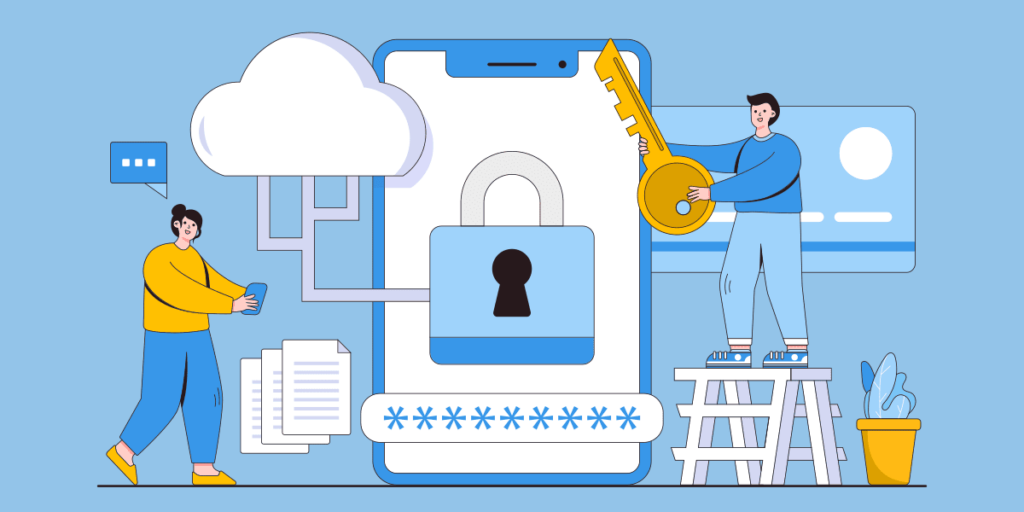Even simple automation helps with IT service management (ITSM). If you ask your company’s IT team to name the most common IT help desk ticket they receive, you’ll likely get the same two-word response: password reset. Whether the password is for an email account, corporate system, or app, employees frequently forget their passwords and need IT’s help to set a new one. If you pair human forgetfulness with the fact that the average worker needs to change the password on their work device once a quarter, you have one of the most time-consuming – and expensive – tasks for an IT department to manage. To this end, Forrester Research found that a single password reset costs about $70.
With a single password reset costing on average $70. And up to 50% of all #servicedesk calls relating to password resets. Something needs to change. The answer to the headache of password resets is #automation, says @TOPdesk. Click To TweetWhile $70 might not seem like a considerable number alone, a study by Gartner shows that 30% to 50% of all IT service desk calls are for password resets. Depending on the size of your organization and the number of end-users, this can take tens or hundreds of hours per week. In some cases, IT service desk employees spend almost 40% of their workday solely handling password resets.
But it’s not just IT that suffers from password resets. As end-users wait for their password to be reset, their work is put on hold – negatively impacting their productivity and the organization as a whole, as well as the organization’s customers.
Embrace automation to save your company time and money
The answer to the headache of password resets is automation. Whether done with a chatbot or via an automated workflow within a self-service portal, automating password resets can decrease service desk calls by more than 40% and reduce end-user downtime – which quickly adds to significant cost savings.
Automation also allows IT service desk employees to handle more complex calls and invest in more significant improvements, ultimately improving job satisfaction, efficiency, and productivity. This, in turn, leads to happier end-users. A win-win!
Need more proof? A Forrester research study shows that employees who work with automation have experienced a 69% improvement in their job satisfaction. In comparison, 78% of business leaders confirm that automating tasks in the organization increases productivity for everyone involved. For example, the District School Board of Niagara found automation helped it to save valuable time and money. As did Kramp Group: it achieved 37% fewer calls thanks to automation.
Beyond boosting morale, keep your company secure
As the number of remote workers continues to rise, so has the number of “bad actors” looking for ways to compromise your company’s information security defenses. Today, many IT service desk teams are stretched thin keeping issues in check for remote workers dealing with myriad issues, such as poor connectivity or device problems.
Resolving remote worker password issues is typically carried out over the phone with the end-user, and most service desk technicians may not know all end-users well or even at all. Because of this, it becomes much easier for a bad actor to use social engineering on a service desk technician to compromise an account.
Also, with social media accounts and other information readily available on the Internet, bad actors can often gather enough information to get past many of the simple questions that an end-user is asked to verify their identity.
Are you ready to embrace automation? Here's five things to consider. #automation #ITSM #ServiceDesk Click To TweetTo help, today’s automated technology solutions can arrange for a whole series of very secure methods of verifying identity. These include two-factor authentication, one-time passwords, and other forms of identification that are much more difficult to circumvent.
Ready to embrace automation?
Here are five things to consider when choosing an automation solution:
- Does the automation solution meet the needs of your company today? Before shopping for an automation solution, list all the pain points you are looking for the new technology to ease and group them into categories such as “must-have” or “nice to have.” When you begin talking with vendors, refer to this list and have them rate their technology from 0 (can’t meet your needs) to 3 (can meet your needs immediately upon plugin). Ensure you understand how the automation solution will function right out of the box and what features must be delivered through custom development. Taking your time and doing your due diligence first can save you time, money, and frustration down the road.
- Is the automation solution user-friendly? After you determine your company’s needs, you’ll need to decide who will use the new automation solution and how user-friendly it will be for them to navigate. However, beyond thinking solely of the end-user, also be sure to evaluate the technology’s “friendliness” for things like data management, data analysis, and data visualization.
- Is the automation solution within your budget? When looking at automation solutions for your company, make sure you take the direct and indirect costs into account. First, determine the upfront investment needed to get the automation solution up and running. This should include consulting, training, and troubleshooting for your team to adapt to the solution; verify these services are included – and for how long. While the upfront fees are likely easy to see, indirect costs may be harder to spot. For example, license and maintenance expenses must be factored in when applicable. Therefore, as you gather proposals and quotes, ensure you understand what you will be paying. Providers will often include features and benefits you may not need in their initial quote.
- Will the automation solution work for your company in the future? Once you begin searching for a new partner, don’t just look at what a solution or technology offers today. The best companies ensure their products stay ahead of the curve regarding features, flexibility, security, and user-friendliness. To evaluate a partner’s innovation, look at how many releases per year you can expect, what the future roadmap looks like, and what kind of involvement and influence you (as a customer) will have on future releases.
- Is the automation solution secure? When evaluating a new solution, be sure to look at both the external and internal security features. When it comes to external security, ensure the solution is safe and secure, and only authenticated users will have access. Ask about single-sign-on and two-factor authentication features and the ability to set password requirements. If your company stores data on the cloud, you’ll want a technology provider with a strong reputation for managing its servers physically and digitally. When assessing internal security, evaluate how well your IT team can control access and permissions, ensuring only the right staff have access to the solution. Also, ensure the solution has an audit trail that helps you track who made what changes and when – for both data and metadata.
Ready to embrace automation, perhaps within your ITSM tool? By doing your homework, asking the right questions, and thinking of your company’s future needs, you’ll find the right technology partner for your company.
If you enjoyed this, please try these ITSM articles:
- ITSM.tools’ ITSM Webinars
- Streamline Ticket Triage and Reduce Customer Churn with AI
- The Problem with the IT Self-Service Portal
- Work Culture Improvement and the Little Best Measure of Service Desk Health
- ITSM and Security – How and Why it is Critical to Improve Collaboration

